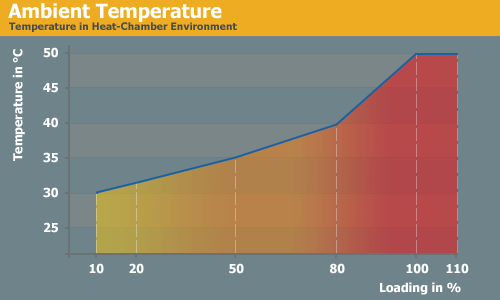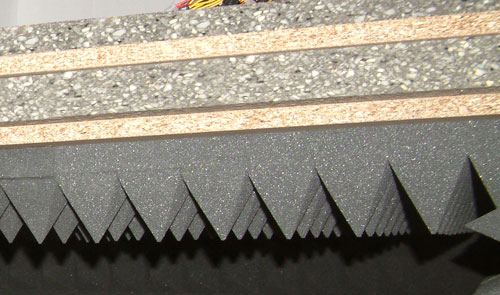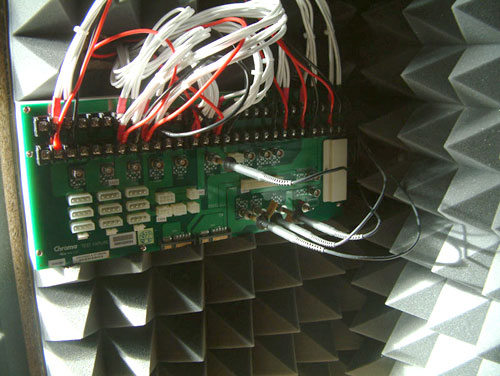FSP Epsilon 80Plus 600W
by Christoph Katzer on August 5, 2008 8:00 PM EST- Posted in
- Cases/Cooling/PSUs
Testing with the Chroma ATE Programmable Load

Our test equipment consists of two Chroma programmable DC Loads that enable us to test power supplies with an output of up to 1500W. The biggest advantage of the Chroma DC Loads is simply the high precision it provides. It can measure differences as small as 0.001V and 0.0001A, which will provide us with best-in-class results.
When programming the Chroma with specific amounts of load calculated according to the ATX norm, we are able to load power supplies to an exact percentage. We can now show results at every specific percentage needed. To get the best overview of a power supply, we load each unit with 10%, 20%, 50%, 80%, 100%, and 110% of the specified output. This is easy to calculate for a 1000W power supply: the 10% load is 100W and 110% load is 1100W. Remember that this is the amount of power the PSU delivers; due to inefficiencies, a power supply will actually draw more power from the wall.
Note: If you would like to know more about our testing methodology, equipment, and environment, please read our PSU testing overview.
We have added an additional 10% on the highest load to see how the units perform with overload. This test will be performed in all future reviews. The overload test is performed at room temperature as well as under more stressful conditions; to ensure we are not too cruel to the power supplies, we will keep the ambient temperature at 50°C in the stress test. Experience shows that many units can stand the overload at room temperature but will experience problems with higher temperature and overload together. Only the best-built units will survive this.

The Testing Environment
There is one flaw in testing power supplies with programmable loads while trying to measure the sound pressure levels at the same time. Because the programmable loads get very loud, there is no chance of hearing the power supply on the test stand. In order to make accurate measurements of the noise levels we needed a way to separate the test unit and the programmable loads. Our solution was to build a very thick box around the unit.

We concluded that a five-layer box with a total thickness of 6" (15cm) containing two layers of wood and three layers of special foam would suffice. It is designed as a box within a box. The inner box does not touch any part of the outer box, making it difficult for acoustic noise to pass through in the form of vibration. Each box is isolated on both sides with a layer of heavy foam that is normally used to insulate engines. On the inside we have an additional layer of 4" (10cm) thick pyramidal foam on every side of the box to eliminate the acoustic waves coming from the test object as well as we can.

To ensure a completely closed system we installed the printed circuit board that the connectors of the power supply are attached to inside the anechoic room/box. In other box designs, you would need to put all the cables through the wall. Unfortunately, that would result in the inside of the box not being fully isolated anymore. Our design keeps everything that needs to be connected inside of the box and maintains isolation.










19 Comments
View All Comments
MrOblivious - Wednesday, August 6, 2008 - link
The funny thing about FSP's Epsilons is they have 4 units submitted at the same 600w output for 80Plus:FSP600-80GHN
http://www.80plus.com/manu/psu/psu_reports/FSP-FSP...">http://www.80plus.com/manu/psu/psu_reports/FSP-FSP...
FSP600-80GLN
http://www.80plus.com/manu/psu/psu_reports/FSPGrou...">http://www.80plus.com/manu/psu/psu_repo...SP600-80...
FSP600-80GLC
http://www.80plus.com/manu/psu/psu_reports/FSPGrou...">http://www.80plus.com/manu/psu/psu_repo...up_FSP60...
and the
FSP Epsilon 80PLus 600
http://www.80plus.com/manu/psu/psu_reports/FSP%20E...">http://www.80plus.com/manu/psu/psu_reports/FSP%20E...
All of them are 80Plus certified and the 80GHN and the 80Plus 600 hit the exact same numbers ;)
HOOfan 1 - Thursday, August 7, 2008 - link
looking at newegg, there is also a 600 80Plus Everest model. You yourself have seen that the Everest platform is just a renamed Epsilon.WT - Wednesday, August 6, 2008 - link
I own an Epsilon FX600-GLN, and the first thing I thought when reading this was 'Wow, AT is reviewing that older PSU today' but soon found this was just a minor update to that PSU. Its been stable as a rock and handled everything I've tossed at it, with an overclocked Q6700 and soon a 4870 to power up 24/7. For the money I paid, it was a no-brainer. If I had an extra $50, I'd splurge on the PCP&C 750 unit today.JarredWalton - Wednesday, August 6, 2008 - link
FWIW, Newegg has the http://www.newegg.com/Product/Product.aspx?Item=N8...">PCP&C 750W on sale right now for $110 after MIR ($140 before rebate). That's no as good as a couple weeks back (when we did the PSU roundup) when I grabbed that for $100 *without* an MIR! Still, considering this PSU is only in Europe and prices are merely okay, that PCP&C is definitely one of the best buys in the US right now.RallyMaster - Wednesday, August 6, 2008 - link
is a ball bearing fan. Anandtech's review and news quality has been dropping as of late. Please get facts right. Do understand that Yate Loon D12SH-12s would be the sleeve bearing version which is rarely if ever used in a horizontal configuration like inside a power supply.C'DaleRider - Wednesday, August 6, 2008 - link
Hmmmm.....no comment on whether the power supply is independently or group regulated (HINT: it's a group regulated power supply which is old tech and not seen as nearly as good as an independently regulated one.)Wonder how FSP, using the old Epsilon platform, managed to get its ripple/noise, according to this test, "....different voltages delivered low ripple and noise results, staying well within specs." Odd that almost every other reputable power supply testing website has found just the opposite...
Then to gloss over the less than top shelf component selection when it comes to capacitors as the unit is stocked exclusively with Teapo (primary) and CapXon (secondary)...neither of which is seen as anywhere near being a first class component like Rubycon, Chemi-Con, etc.
But so far we've just seen praise heaped on each and every power supply tested.....never have they had one that failed to be great...which begins to make a lot of their testing suspect. Never downgrade a power supply for substandard interior components or build quality, never a demonstration of ripple, no MOV on the primary (all the other reputable PSU-makers on the block are doing it... why not FSP?), yet we fccus on three heatsinks...but no mention of what's attached to them, like the capacities of the seimconductors for the primary and secondary sides....or what are on the OCP controller, or if the OCP controller actually functions, and on and on.
Incomplete.....and yet we have another power supply that sails through with flying colors despite the company, using this same platform, having huge problems with ripple.
Amart - Wednesday, August 6, 2008 - link
"All of the different voltages delivered low ripple and noise results, staying well within specs." Thanks you for this enlightening revelation! I have no knowledge of what this "ripple and noise" means, but since you say it's "within spec's" I don't care to find out. Something in your writing makes me tingle all over... and want to trust you unquestionably.Sincerely yours,
Iddy Otconsumer
MTBF - Tuesday, March 9, 2010 - link
FORTRON / FSP Power Supply Units are unreliable hardware devices.Failed just after 784 days of normal use (about 3500 hours only)!.
Calin - Wednesday, August 6, 2008 - link
Funny :)Ripple seems to be harmonics in the output (harmonics would be periodic variations, one of the most common could be at the frequency of the main electricity input - 50 Hz in Europe and 60 Hz in USA - or at its multiple/submultiples (25 Hz, 100 Hz and so on).
Noise is just that - random variations in the output. In the end, I think noise is less dangerous than ripple, as ripple might create standing waves/resonance with ripples in other AC-powered equipment (monitor, printer), which could lead to problems.
Frumious1 - Wednesday, August 6, 2008 - link
You name is half right at least. Thanks for being a fucktard. I guess they should make up graphs showing ripple voltages just to appease people like you, because that's so much more useful than a statement on whether or not there was ripple. Let me guess: you read Jonny Guru, right? Do you post there and complain about his lack of fan speed and noise level testing?I'll get worried when I see a cruddy PSU tested here that gets praised. So far, the cheapest PSU tested by Anandtech seems to be about $80. Yeah, I'm shocked that ripple results have all been good. Seriously, someone send these guys some Antec SmartPower, Raidmax, Rosewill, Logisys, Powertek, CoolMax, etc. PSUs. You know, the ones that claim SLI and Crossfire support and yet cost under $60. Or send pretty much and PSU that comes with a case. If I see some of those getting by without some serious problems, then I'll get upset.